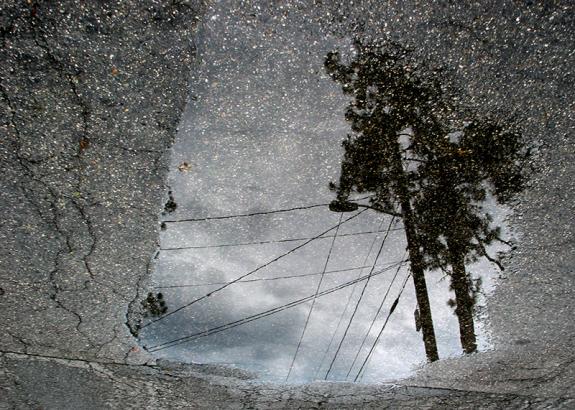Slippery roads

The wet season is upon us (as if it ever left), and many of us know that preparing for adverse weather conditions is part of staying safe while navigating through the Pacific Northwest. Since rain is such a familiar part of our winter environment, some of us may not even notice the water pooling on roads or in parking lots. However, hydroplaning on a wet surface can be nerve-wracking and dangerous.
Hydroplaning happens when the water in front of your tires builds up faster than your vehicle’s tires can push it out of the way. This causes the vehicle to rise up and slide on a thin layer of water between its tires and the roadway. Taking these simple steps can help you avoid hydroplaning and deal with it if it happens to you:
- Ensure your tires are in good condition and are properly inflated. Tires should be rated for all seasons or wet weather. Also, you can check to see if you have enough tread depth. Insert a quarter upside down in the tread. If you can see space above Washington’s head, you should consider getting the tire replaced.
- Don’t use cruise control in wet or adverse weather conditions.
- Make sure you can see and be seen. Your wipers shouldn’t leave streaks on the windshield. If they do, have them replaced. Turn your headlights on. In Washington, if your wipers are on, then your headlights must also be on – and it will help ensure others can see you.
- Slow down. Drive at a slower speed that is appropriate for the conditions of the road. Remember that the maximum posted speed limits are for ideal, dry conditions.
- Give yourself plenty of room between you and the vehicle in front of you. It takes longer to slow and stop in wet weather. You may need as much as 6 to 8 seconds at highway speeds in adverse weather.
- Avoid standing water or ruts that may collect water – especially on the outside lanes of multiple-lane roadways.
- If you do find yourself hydroplaning, remain calm. Don’t brake or turn suddenly. Ease your foot off the gas pedal until you can feel the road surface again. Steer as straight down the road as possible. Brake gently to slow down further and gain even more traction and control.
For more information, take a look at this terrific video provided by a driver’s education company called “Wheels in Motion.” Also, NASA and the US Department of Commerce developed this vintage video about hydroplaning in 1964 – it may be a bit culturally outdated, but the hydroplaning science and driving advice holds true to this day. Have any more suggestions for dealing with the Pacific Northwest’s wet winter roads? Let us know on this post to our Facebook page.




